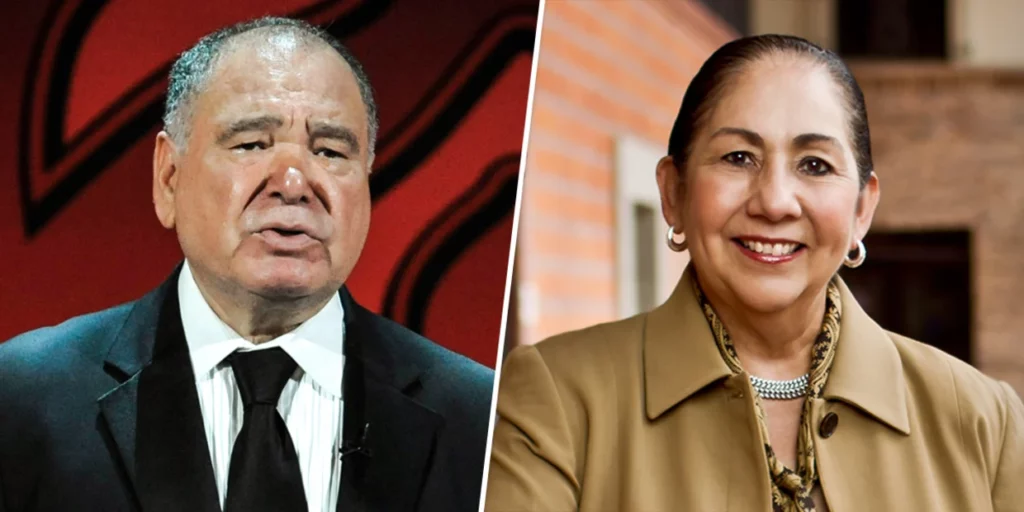
Two Mexican Americans who have dedicated their lives to fighting for equality and the advancement of Latinos were awarded the Presidential Medal of Freedom, the nation's highest civilian honor, at the White House on Thursday.
Raúl Yzaguirre is the founder and former leader of the National Council of La Raza, considered the nation's largest Hispanic civil rights and advocacy group, renamed UnidosUS, and Julieta García is a former president of the University of Texas at Brownsville — the first Latina to serve as a U.S. university president.
Born a decade apart in the Rio Grande Valley, Yzaguirre and García took lessons from their upbringings in the South Texas region to achieve positions of power, which they then used to dismantle discrimination and fight for the advancement of Latinos and other people of color.
Yzaguirre, 82, born in San Juan, Texas, took a small organization with about $500,000 and 23 affiliates and grew it into a formidable one with a $40 million budget and 250 affiliates.
The group helped shape policy on immigration, education, voting rights and more. Yzaguirre stepped down in 2004, after 30 years at its helm.
He also served as the ambassador to the Dominican Republic under President Barack Obama.
García, 73, born in Brownsville, Texas, was president of UT-Brownsville and helped oversee its merger with University of Texas Pan American to become UT-Rio Grande Valley, which serves mostly Latinos. She fought for money from the state's Permanent University Fund, which holds 2.1 million acres and revenue from oil and gas leases on the land, to create the university.
UT-Rio Grande Valley is ranked in the top three schools awarding bachelor's degrees to Latinos.
Yzaguirre and García are among 17 people awarded the medal Thursday by President Joe Biden. Among the honorees are former Rep. Gabby Giffords, D-Ariz.; Olympic gymnast Simone Biles; U.S. soccer player Megan Rapinoe; the actor Denzel Washington; and posthumously, Sen. John McCain, R-Ariz., and Steve Jobs, the co-founder of Apple.
'A visionary'
Yzaguirre’s work with UnidosUS rested heavily on bringing together the nation's increasingly diverse Latino population to forge a stronger political force that could command the attention of Washington power brokers. The 2020 census counted 62 million Latinos in the U.S.
“What Raúl doesn’t get enough recognition for is how much of a visionary he was,” said Lisa Navarette, who worked with Yzaguirre and now is an adviser to UnidosUS President Janet Murguía.
“In the early '70s he was already envisioning what would become the Latino community," Navarrete said.
Yzaguirre was raised by his grandparents and was heavily influenced by his grandfather's own story of nearly being lynched by Texas Rangers when he was out past a curfew imposed by the state on Mexican Americans and Mexicans at the time, according to a 2016 biography, "Raul H. Yzaguirre: Seated at the Table of Power," by Stella Pope Duarte.
Yzaguirre was a protégé of the civil rights leader Dr. Hector P. García, a Mexican American physician who formed the civil rights group American GI Forum after witnessing mistreatment of Mexican American World War II veterans. Navarette said García helped Yzaguirre channel his anger over discrimination into activism.
Yzaguirre's work in Washington continues to have an impact. Charles Kamasaki, a senior adviser at UnidosUS, recalled Yzaguirre deciding to agree to compromise on what became the Immigration Reform and Control Act of 1986. He didn't like the enforcement levels in the bill and had worked to improve it until finally agreeing to a compromise in 1986, giving about 3 million immigrants without legal status in the U.S. a chance to become lawful permanent residents.
Yzaguirre helped produce a scathing report on the Smithsonian Institution's failure to serve and hire Latinos, a report that was instrumental in last year's approval of a National Museum of the American Latino.
His tenure was also marked by clashes with administrations. He quit a commission on education and Hispanics in the 1990s in frustration over its partisanship and delays and picketed President Lyndon B. Johnson's administration over its lack of Hispanics.
"Raúl taught me so much about integrity that I will take with me for the rest of my life," said Cecilia Muñoz, a former Obama domestic policy adviser.
Muñoz said she was among the first women at the National Council of La Raza to become pregnant while working there. She asked Yzaguirre whether that would end her work there, as many colleagues expected.
"He said, 'Of course not, we are family focused and it's time to put our money where our mouth is.' This was 1992, before the Family Leave Act," she said.
When Yzaguirre was unable to testify on the 1986 immigration bill in the U.S. Senate, he sent Muñoz. The staff of Sen. Ted Kennedy, D-Mass., suggested the council reconsider, but Yzaguirre told Muñoz to rise to the occasion.
"He developed leaders and I'm one of many, many alumni at the organization who followed his example and made a difference in other organizations and in government," she said.
Ben Yzaguirre, the youngest of his six children, said that as he gets the medal his father wants people to know that “while the achievements he had were great and moved our community forward, there’s still a lot of work to be done. Immigration reform, voting rights, still still need attention ... to continue to progress.”
Yzaguirre retired in 2013 when his Parkinson’s worsened. He lives in Maryland.
In a statement released by UnidosUS, Yzaguirre responded to the recognition.
“Reflecting on my lifetime journey, I am proud of the fact that we all continue to be motivated by our desire to make the promise of the American Dream a reality,” he said. “For too long, Hispanics have been absent from that promise, even though they were historically among the first Americans as well as the newest Americans, and continue to make enormous contributions to our society and our economy.”
García told NBC News that she met Yzaguirre, whom she had revered for years, in Washington and they discovered they were cousins after she told him that the Yzaguirre name was also in her family.
"From then on, when I walked into a room where I was a nobody and Raúl was always a somebody, he would say, 'Be careful with my prima,'" or cousin, she said.
A successful fight to educate new generations
But García knew how to fight her own battles, too. She often has said growing up with brothers prepared her for the almost all male domain of college and university presidents.
García's mother, a fifth-generation Texan, died when García was 9. Her father was from Monterrey and came to the U.S. as a young boy when his family fled the Mexican Revolution. He had come from an educated family and did well in high school. Her mother graduated salutatorian at her high school in Harlingen, Texas. But a college education was unaffordable and inaccessible for her parents, García said.
"Imagine doing well in school but there's not a university to go to or there's one that you don't have access to because it's far away. Our intent was to never let that happen to another generation again in the Rio Grande Valley," she said referring to those she worked with to get the state Permanent University Fund money to UT-Rio Grande Valley and its medical school.
"Julieta Garcia believes in the talents and vitality of the people of south Texas," said Sarita Brown, co-founder and president of Excelencia in Education, a nonprofit Latino education advocacy group. "She shared her courage, expertise and commitment to advance a vision for higher education that serves her community and lights a path for us to follow for the future."
García said she spent 22 years in the back of the room at university meetings raising her hand trying to get a share of the funds for UT-Brownsville. The school, as well as UT-Pan American — which were both on the heavily Latino South Texas area — were the only UT schools that did not get some of the money at the time.
García took other steps to improve higher education among Latinos. Under her leadership, the university built up its physics program and added a second library to the campus. She fostered student interest in chess, not often associated with Latinos, through competitions and scholarships.
"We planted a huge flag in the UT System. ... When we created UT-RGV, it was with the express purpose of getting access to the Permanent University Fund," García said. "That opened a spigot to South Texas and higher education forever more."
The numbers of Latinas leading universities has diminished in recent years and García said she hopes hoping "teaching the next generation to be advocates" can help change that, including in Texas, she said.
"My job has been and will always be to talk about the potential of the human capital in the Valley of the Hispanic population in the United States," she sad.
"Imagine one day we have a governor in Texas who says, 'Aren't we lucky? Look at the number of Hispanic Texans that we have,'" she said. "They are bilingual, they are biliteral and bicultural. That's an asset in a world market."
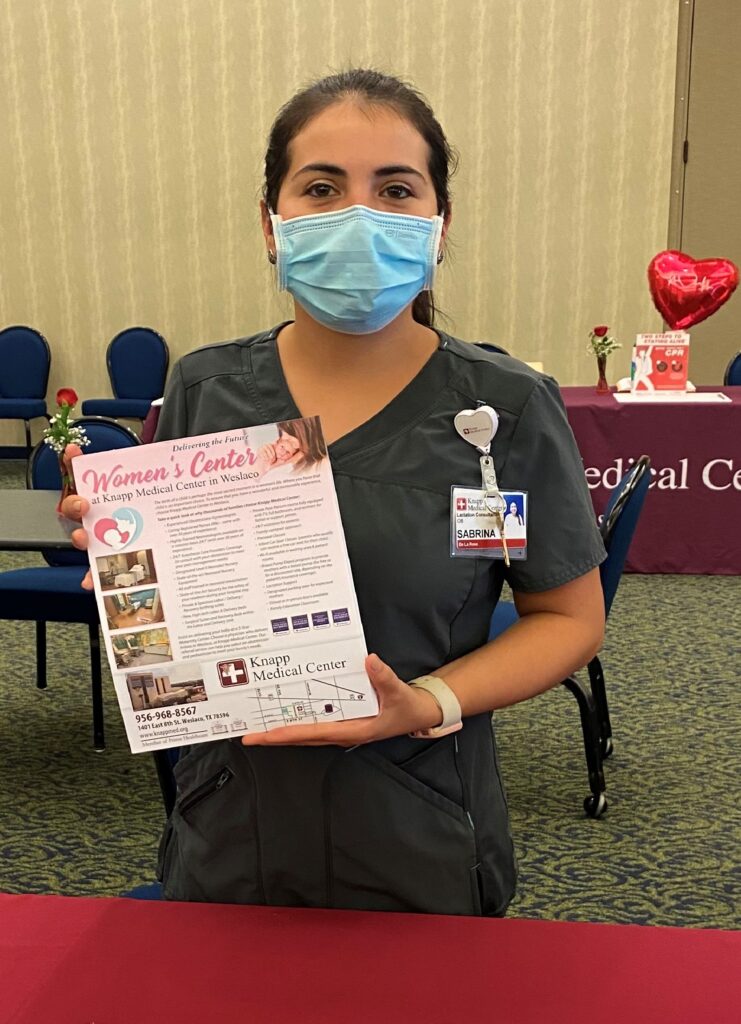
WESLACO – A new lactation consultant, Sabrina de la Rosa, CLC, BSMCH, is promoting the finest nutrition that nature can provide for newborn babies – their mother’s breast milk – at Knapp Medical Center in Weslaco. Mrs. de la Rosa is passionate about helping new mothers with breastfeeding. She is holding free classes on breastfeeding – and can even help mothers obtain a free breast pump. The free breastfeeding classes are available on-line (via Microsoft Teams) on Saturdays at 9 a.m. For information on the classes or lactation support, interested mothers can contact Mrs. de la Rosa at (956) 968-8567, ext. 4376 or at [email protected].
Mothers who would like to check into the possibility of obtaining a free breast pump can also contact Mrs. de la Rosa for more information. “Ordering a breast pump for your baby can be completely free, and as a lactation consultant, I can help with the work involved in making that happen,” Mrs. de la Rosa said. “The Affordable Care Act requires most health insurance plans to cover breastfeeding services and supplies. That means that in most cases, you could receive a high-quality, name-brand pump at no cost to you.” “Breastfeeding provides the best nutrition for our babies,” Mrs. de la Rosa added. “It helps protect babies from infections, and allows the baby to bond more closely with the mother.” Knapp Medical Center encourages new mothers to try “skin-to-skin” contact. The purpose of skin-to-skin is to encourage breastfeeding by placing the baby on the mother’s chest as soon as possible after birth. In fact, the first hour after the baby is born, “the golden hour,” is a critical time to encourage breastfeeding. Recognizing this, the labor-and-delivery and post-partum nurses at Knapp Medical Center strive to keep the baby with the mother as long as possible. For more information, please contact the Women’s Center at Knapp Medical
Center at (956) 973-5350.

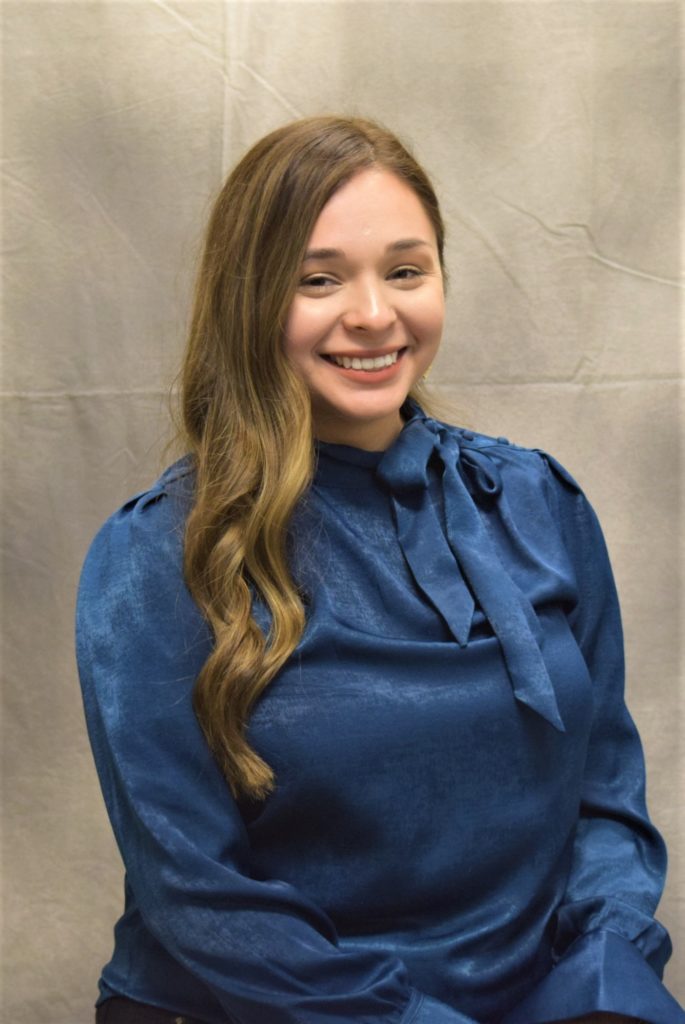
Prairie View A&M University Cooperative Extension is proud to announce its first government contracting academy called B.I.D. (Business in Development) in the Rio Grande Valley. The Community and Economic Development (CED) Unit of the Cooperative Extension Program at Prairie View A&M University created The B.I.D. Academy, a 7-week curriculum-based program to focuses on increasing the limited-resource community’s knowledge and skills that are necessary to compete and win state government contracts with the State of Texas HUB (Historically Underutilized Business) certification. In many instances, limited-resource clients are first-generation business owners who may lack the training and knowledge necessary to market, bid, and win state/county contracts, says CED Willacy County Agent Megan Rodriguez.
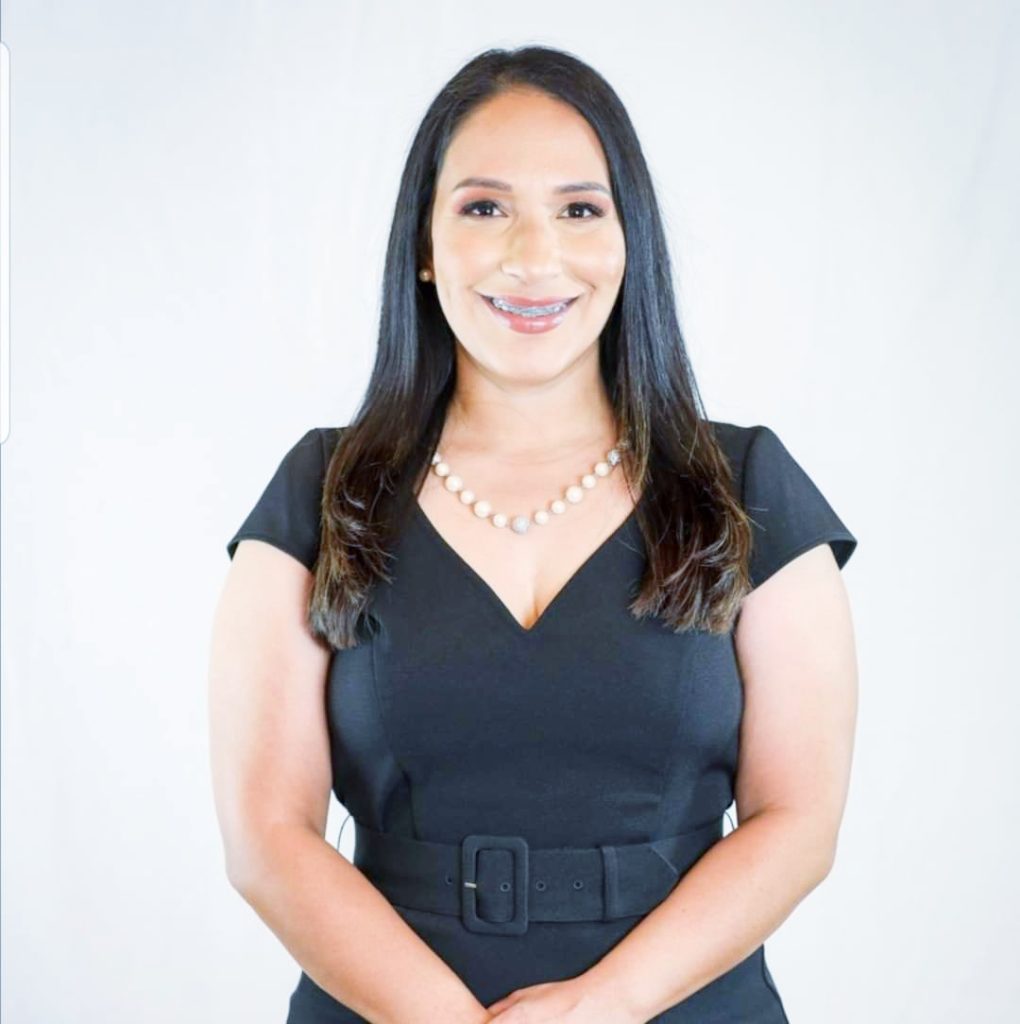
CED Hidalgo County Agent Rina Castillo shares, “There are over 200 state agencies in Texas and all of them, including universities, are required to make a good-faith effort to include HUB certified vendors in their procurement opportunities. That is why the B.I.D. Academy is so important for small businesses to get the necessary knowledge on how to get HUB certified and how to use their new HUB certification.”
The B.I.D. Academy will kick off Wednesday, May 4 at the First National Bank in Mercedes Texas. The program is 7 weeks, every Wednesday from 6-7:30PM and will end Wednesday June 15 with a graduation/mixer. The Academy will be hybrid, starting with an in person following with virtual classes and ending with 3 in person classes. Upon program completion, participants became certified by The Community & Economic Development Unit of the Cooperative Extension Program at Prairie View A&M University and included on their exclusive list of trained vendors as well as free business marketing through their various multimedia outlets and network of State purchasers.
Are you ready to take your business to the next level? Everyone is welcome to attend. Sign up for our 2022 B.I.D. Academy https://bit.ly/RGVBIDACADEMY22
If you have any questions, contact Rina Castillo 956-383-1026 or Megan Rodriguez 956-689-2412.
B.I.D. Academy’s weekly sessions:
Session 1 IN PERSON (Wednesday, May 4) Historically Underutilized Business Overview/Navigating the new Comptroller’s website.
Session 2 Virtual (Wednesday, May 11) Business Planning/Marketing, Capability Statements
Session 3 Virtual (Wednesday, May 18) Keep Your Books: Basics Bookkeeping
Session 4 Virtual (Wednesday, May 25) Pitch Writing
Session 5 IN PERSON (Wednesday, June 1) Access to Alternative Capital
Session 6 IN PERSON (Wednesday, June 8) Supplier Diversity, Subcontracting Plans & Proposals
Session 7 IN PERSON (Wednesday, June 15) Graduation/Pitch Contest/Mixer
Prairie View A& M University
Founded in 1876, Prairie View A&M University (PVAMU) is the second oldest public institution of higher learning in the state of Texas located about 40 miles northwest of Houston. A Historically Black College and University (HBCU), with an established reputation for producing agriculturalists, engineers, nurses, and educators, PVAMU offers degrees across 36 bachelors, 30 master’s and 5 doctoral degree programs through eight colleges and schools. A member of The Texas A&M University System, the University is dedicated to fulfilling its land-grant mission of achieving excellence in teaching, research, and extension.
Cooperative Extension Program
Cooperative Extension Program delivers practical research-based knowledge to small farm producers, families, aspiring entrepreneurs, and youth in 41 Texas counties. We work with people who need us the most. Many of them have limited personal or family assets, limited opportunities or they come from communities that have limited resources. We offer programs that work for people in the areas of 4-H & Youth Development (4H), Agriculture and Natural Resources (AGNR), Community and Economic Development (CED) and Family and Community Health (FCH).
The grandson of civil rights activist César Chávez visited UTRGV in observance of National Farmworkers Awareness Week to encourage campus community members to connect to their history and find their voice.
Eduardo Chávez, an activist, podcast host and director of “Hailing César,” was the fourth speaker of the 2021-2022 Distinguished Speaker Series Tuesday night in the PlainsCapital Bank El Gran Salón.
Chávez said it is important to continue to inform today’s youth and keep his grandfather’s legacy alive.
“My main goal in doing events like this and talking to students is to, hopefully, inspire them to go on a journey similar to mine, to learn about their history, especially if they’re Mexican American and their families are connected to farmworking,” he said in an interview after the event. “Learn about what that work is. It’s more than just a form of labor.”
During the event, a screening of Chávez’s award-winning documentary, “Hailing César,” was shown to the dozens of attendees.
“The goal for this film is really to, hopefully, empower young people to go on their own journeys, and find their own voice and find their own vehicle to be socially conscious,” he said. “The main thing is to have it come from an authentic place and knowing your own history is the easiest bridge to that authenticity.”
Noel Rodriguez, UTRGV director of the College Assistance Migrant Program, introduced and played Chávez’s documentary.
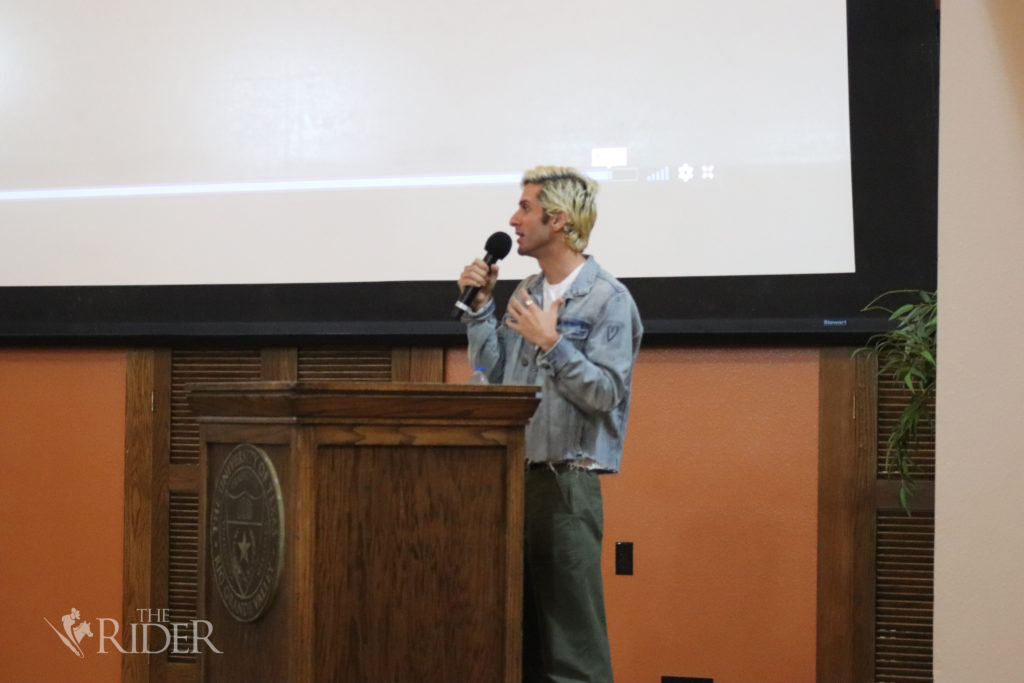
CAMP is a government-funded program that has been assisting first-year college students with a “migrant seasonal background” for 20 years, according to Rodriguez.
“Since its debut, Eduardo has screened ‘Hailing Caesar,’ and spoken at over 50 universities in three different countries,” Rodriguez said before starting the movie. “We are honored to have Eduardo join us.”
Chávez’s documentary portrayed his journey in learning and connecting to his family history, specifically his paternal grandfather César Chávez, a civil rights activist and co-founder of the National Farmworkers Association.
Several guests shared their experiences working in the field during the Q&A portion of the event, including 65-year-old Olga Garcia who came to the U.S. when she was 14.
“I remember crossing the border,” Garcia said in an interview with The Rider after the event. “[My mother] came and talked to people [who were] contracting people to take them up north. And later on, she said, you know, ‘We got us a job.’ I was poor when I lived in Mexico, but coming over here … I felt poorer, because we started from scratch.”
Garcia said she often missed the beginning and end of the school year to work in the fields, making it hard to catch up with classwork.
“People would think you were dumb or something,” she said. “You’d miss the whole [first] six weeks or the last. Sometimes, it was very hard to catch up.
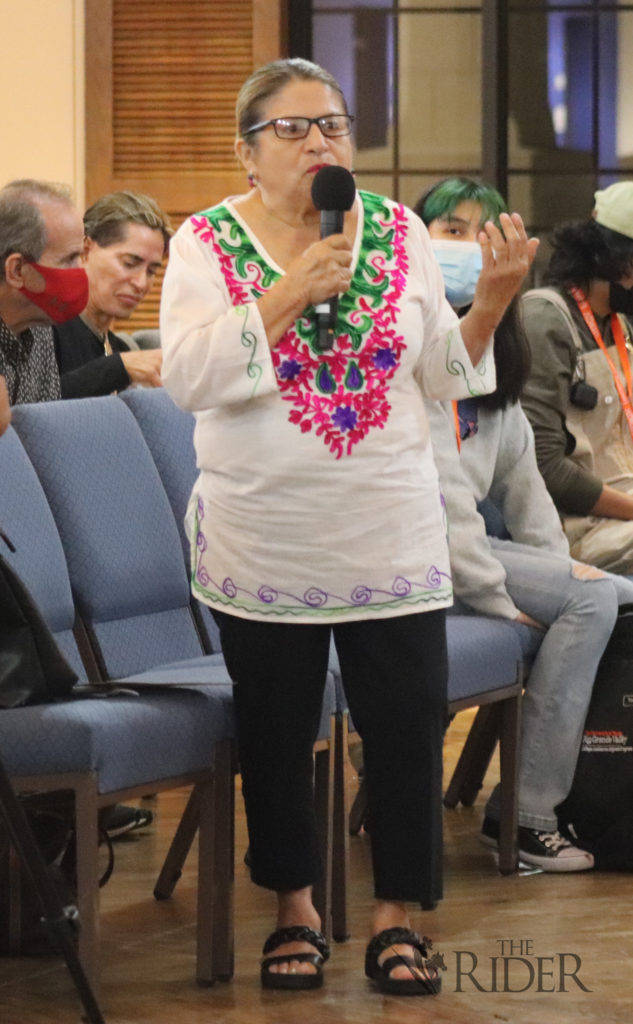
“At the time of my senior year, I told my mom, ‘Mom, I can not go anymore. I want to go to college.’”
Garcia earned a technical degree in data processing from Texas Southmost College so she could work and help her family. She then earned her bachelor’s and master’s degrees while employed in data processing for TSC, where she worked for 32 years before retiring.
The documentary screening and discussion was a reminder to work hard, Garcia said.
Richard Hernandez, who also attended the event, said he marched through Downtown Brownsville to boycott grapes in California.
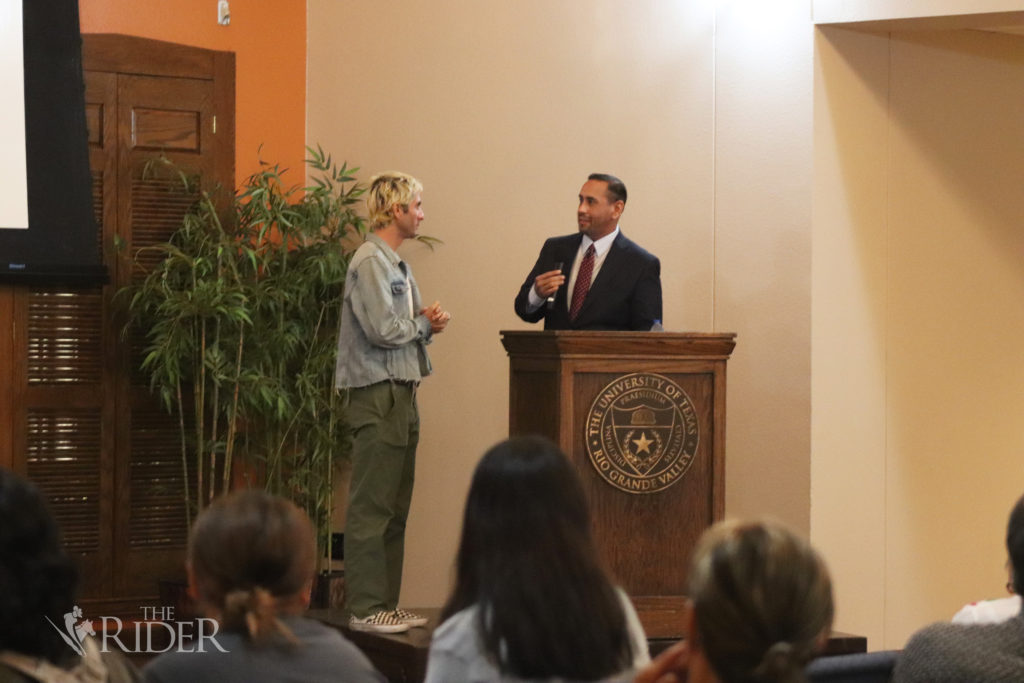
“Back in 1974/75, César Chávez came here,” Hernandez said. “I must have been 10 years old and we used to pick cotton as well. Then at 15/16 is when I got to meet him. … It was the American Farmworkers and we all marched to downtown.”

During the school year, teachers and counselors work with students to promote positive self-esteem and overall emotional well-being. Students participate in activities and discussions about the importance of respecting others and their rights to feel safe at school. They are encouraged to treat others with kindness and respect differences while embracing the qualities that make them unique.
For younger students, some lessons and discussions are about being able to express and handle their emotions, treating others the way they want to be treated, and voicing their concerns to a trusted adult when they feel unsafe in a situation. Role-playing activities are sometimes to practice skills that will help them solve problems they may encounter with peers.
Bridget Tamez is a fifth-grade teacher at Ruben Hinojosa Elementary in Mercedes. She says that her school has two upcoming counseling events for selected fifth-graders, and speakers will help promote a positive self-image for the students.
For both lower and upper elementary grades, required lessons include bullying awareness and prevention to help keep students safe.
“Our counselor, for the past few years, has been visiting the elementary school classrooms to give lessons that inform the students about David’s Law, how to identify bullying, and also strategies for dealing with it and for preventing it,” Tamez said. “Teachers also give lessons about cyberbullying and how to recognize and address it.”
David’s Law was passed in Texas in 2017. According to the David’s Legacy website, some of its key points include:
- Allowing schools to prevent and combat cyberbullying by empowering themselves to investigate and address incidents regardless whether they occurred within the school setting or elsewhere
- Requiring districts to include cyberbullying in their district policies and notify parents if their child has been a victim
- Allowing schools to collaborate with law enforcement when serious cyberbullying incidents occur
- Giving parents and courts new tools to protect victims of cyberbullying
- Encouraging schools to invest in counseling and rehabilitation services for victims and aggressors of bullying
“Strategies that students are encouraged to use when they encounter a bullying situation include tell an adult, tell the bully to stop, walk away if the situation is not safe, and stand up for others (if you are a bystander),” Tamez said. “Our district requires that teachers complete a yearly online training called Bullying Recognition and Response. It teaches us to be proactive in our approach to bullying by identifying it when we see it and addressing the problem promptly with zero tolerance (following school policy). All staff play a key role in keeping our students safe.”
It is very important that students recognize that they also play a key role in bullying prevention. Schools can help build awareness on coping with and handling stress, emotions, and conflict resolution. These lessons are invaluable in helping students enjoy a positive experience at school.
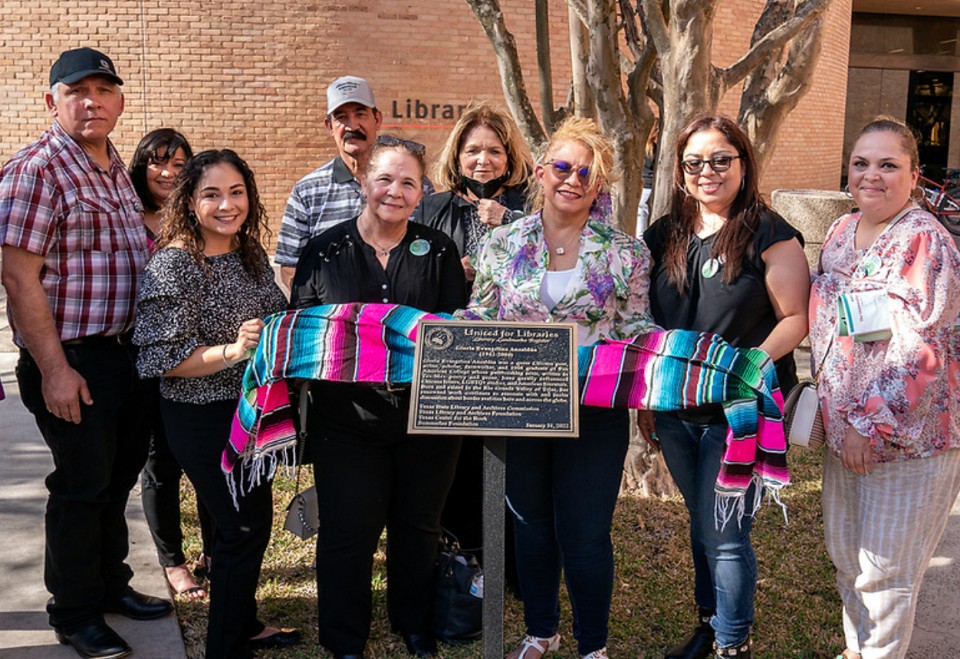
Family members of Gloria Anzaldúa pose with the literary landmark honoring the university alumna at an unveiling event hosted by the UTRGV Center for Mexican American Studies on March 28 at the UTRGV Edinburg Campus.
El Retorno Al Valle: Literary Landmark Unveiling and Symposium honoring Gloria Anzaldúa was held at her alma mater, UTRGV, on Monday, March 28, on the Edinburg Campus.
A symposium about Anzaldúa was held during the day at the UTRGV Ballroom, and in her honor, the literary landmark unveiling – attended by Anzaldua’s family and the UTRGV community – was held at the UTRGV Library Courtyard.
“We are honored that members of Anzaldúa's extended queer familia presented at these historic events, including Graciela Sanchez, Anel I. Flores, and Ari Chagoya, to name a few,” said Dr. Emmy Perez, associate director for the UTRGV Center for Mexican American Arts.
“One of the reasons this landmark is important is because Anzaldúa was never invited to speak on our campus, to our knowledge. The other and more obvious reason is that she was an outstanding poet and writer. She crafted powerful images based in the natural world here en el Valle that resonate beyond description.”
The literary landmark recognizing Anzaldua is now one of six in the state. Anzaldúa is the first Chicana author to be honored with this distinction in Texas.
Anzaldúa, a queer Chicana poet, writer and scholar, was born and raised in the Valley, where she worked as a farmworker.
She wrote and published numerous groundbreaking texts, including Borderlands/La Frontera: The New Mestiza and Luz en lo Oscuro/Light in the Dark: Rewriting Identity, Spirituality, Reality.
Her work and life are testaments to her contributions in numerous fields of study, and presenters discussed her impacts - past and present – with a look to the future.
“El Retorno Al Valle” was organized by the UTRGV Center for Mexican American Studies (CMAS), Humanities Texas, and multiple UTRGV, state and local partners.
“Gloria Anzaldúa means a lot to many people in the community,” said Dr. Stephanie Alvarez, director of the UTRGV Center for Mexican American Studies and co-organizer of the event.
“For many faculty members and students, she has opened new possibilities of seeing the experience of living on the border and being a Chicana, and our students really reflect on that. I think it’s important the university has recognized her experiences as a student, as an alumna, and the major contributions she’s made to literary studies theory.”
Scholars, poets, activists and visual artists from the Valley and beyond the region gathered to consider the impact of Anzaldúa’s work.
The symposium events were free and open to the public.
THE LEGACY OF GLORIA ANZALDUA
Gloria Evangelina Anzaldúa (1942-2004) was valedictorian of Edinburg High School in 1962, graduated from UTRGV legacy institution Pan American College in 1968, and taught in the PSJA school district from 1967-1973.
She attended graduate school at UT Austin and UC Santa Cruz, where she obtained a posthumous Ph.D.
Aside from writing and publishing numerous texts, she served as editor/co-editor of several anthologies, including This Bridge Called My Back: Writings by Radical Women of Color and this bridge we call home: radical visions for transformation.
Her work also is collected in Interviews/Entrevistas, and The Gloria Anzaldúa Reader edited by AnaLouise Keating. Anzaldúa is the author of two children’s books: Friends from the Other Side/Amigos del Otro Lado and Prietita and the Ghost Woman/Prietita y La Llorona.
In her book Borderlands/La Frontera (1987), in the essay "How to Tame a Wild Tongue," Anzaldúa writes about her university experience in the 1960s: “At Pan American University, I, and all Chicano students were required to take two speech classes. Their purpose: to get rid of our accents" (76).
LITERARY LANDMARK DESIGNATIONS
To earn a Literary Landmark designation, a group or individual must be responsible for the continued designation. A designation itself can take up to eight weeks to approve, as the honoree must have a compilation of background materials that will corroborate the role of the site, including the author’s work and writings.
Norma Elia Cantu, president of the American Folklore Society and professor in Humanities at Trinity University in San Antonio, said these designations are not easy to get.
“The American Library Association (ALA) designates particular locations that are significant to the literary history of the country, and they designate that spot a literary landmark,” Cantu said. “It's recognized with a plaque, and it stays there in perpetuity. … I believe, in Texas, we only had five up to this year.”
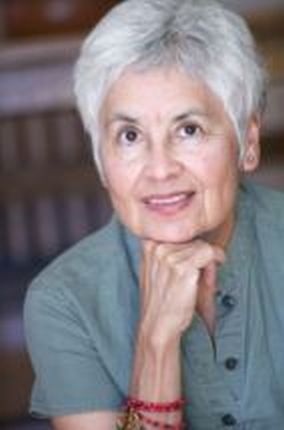
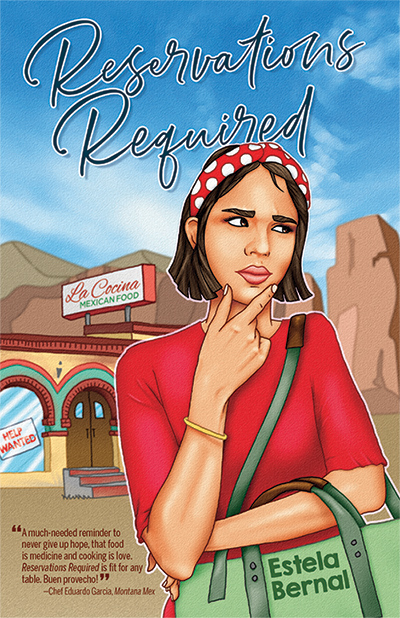
Estela Bernal was born and raised in the Rio Grande Valley. She’s a graduate of E-E High, UTPA (now UTRGV) and California State University, Sacramento. Although she currently lives in Portland, OR, she’s returned to the Valley every year (pre-Covid) to visit family and friends.
An avid reader, she started writing for children because she believes there’s a great need for diversity in children’s books. Her most recent book, Reservations Required, was released by the University of Houston’s Arte Público Press in November. In addition to this young adult novel about a girl’s struggle to overcome the obstacles that stand between her and her dream of becoming a chef, she’s written a middle grade novel (Can You See Me Now?) and a picture book story (Mount Tabor: Home of Ardi the Squirrel) published in an anthology of stories by Oregon authors—Oregon Reads Aloud.
Another reason she writes is that she wants to do more to support education, animal welfare, and environmental protection. For these reasons, she donates the author’s proceeds from her writing to organizations that support these causes, among them The RGV Low-Cost Spay/Neuter Clinic, Yaqui Animal Sanctuary, the UTRGV campus cat project as well other local and national/international groups and individuals involved in providing services to underserved communities.
Estela will be visiting various schools throughout the Valley on her next visit and will be offering a free workshop for aspiring writers (ages 12 through 18) at The Storybook Garden (260 S Texas Blvd, #106, Weslaco) on Saturday, April 9th at 10 AM. She will also be reading at the Mayor Joe V. Sánchez Public Library, 525 S. Kansas Ave, Weslaco that afternoon at 2 PM. Anyone wishing to sign up for the workshop and/or order copies of Reservations Required may contact The Storybook Garden Bookstore. Please note that in order to allow space between participants, the workshop will be limited to twelve. Bring Paper and pencil for notes and short exercises.
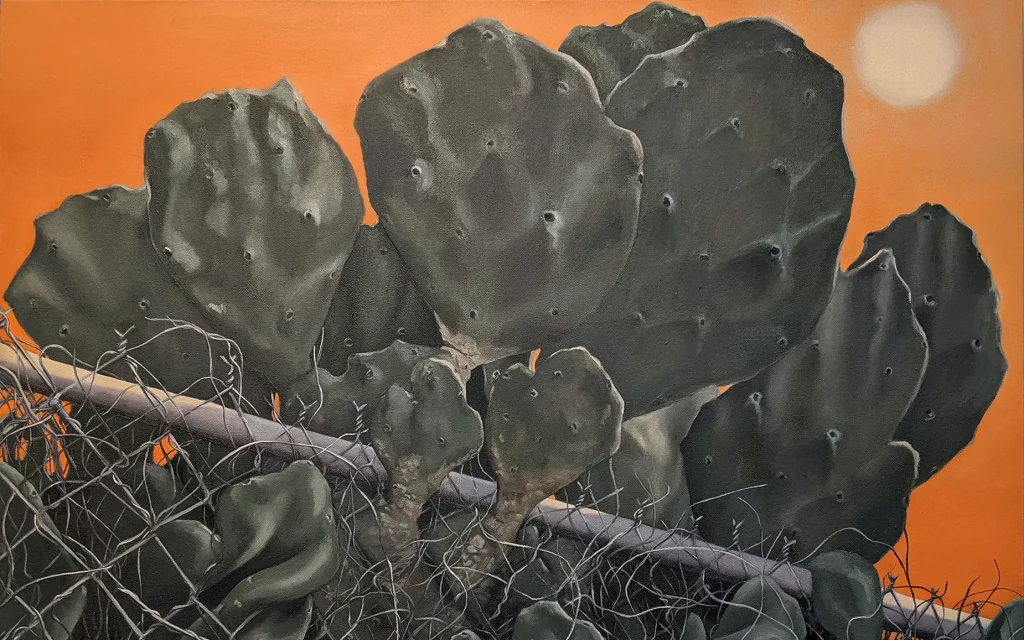
The Rio Grande Valley is not one of the easier places in America to build a career as a contemporary artist. The strip of predominantly blue-collar border towns and cities from the Gulf Coast and Brownsville up the river to Edinburg, McAllen, and beyond boasts few top-notch art institutions or deep-pocketed collectors. The scene can leave something to be desired too. On the porch outside Presa House Gallery in San Antonio, painter Donald Jerry Lyles Jr. tells me about a short-lived “art walk” series in McAllen. Nearby bar owners raised a stink, Lyles says, because the participating galleries were giving away free wine and cheese. The monthly event was kiboshed. So much for local patrons of the arts.
This month, Presa House is presenting “South of the Checkpoint/North of the Border,” featuring works, mostly paintings, by Lyles and fellow homegrown RGV artists Gina Gwen Palacios and Rigoberto A. González, all three of whom teach at the University of Texas–Rio Grande Valley. Bigger-city venues don’t often showcase RGV artists, and, as the exhibit at the DIY artist-run Presa House shows, that’s a shame. González, Lyles, and Palacios have unearthed rich veins of subject matter in the landscapes and people of the RGV, and their work deserves more reach. One gift that painters, especially, can give to the rest of us is the momentary ability to see a place more clearly, incisively, or transcendently than we ever could on our own. Each of the three artists on display, in his or her own way, offers that sort of singular, transformative interpretation of the Valley.
The most haunted vision probably belongs to Palacios, a Rhode Island School of Design graduate who hails from a family of migrant farmworkers based in and around the Valley. She speaks of
her art as uncovering and recovering in the landscape traces left by generations of agricultural workers, who made the Valley what it is today. Cotton is a go-to subject, as are endless fields, and the vanishing point of the road as it stretches to the horizon, giving the sense that one could drive forever (as farmworkers do over the course of their lives) without ever getting anywhere.
An especially precarious type of migrant experience—the dangerous overland trek from Mexico—is also suggested in several of Palacios’s canvases: blue barrels in a scrub desert, the word “AGUA” crudely painted on their sides; a patch of rough-hewn wooden crosses in an overgrown rural cemetery; the big prickly pear cactus that has forced itself through a chain-link fence. Everywhere in her paintings, systems of order are buckling under the forces of nature—lines of telephone poles sagging to one side, roads filling with puddles of rain. People are absent, except for one portrait of her farmworker aunt and young cousin standing in a ragged field. It’s titled American
Primitive, a reference to an album by folk-music compiler and guitarist John Fahey, but also to Grant Wood’s iconic painting American Gothic.
The latter allusion underlines some key questions posed by the entire “South of the Checkpoint/North of the Border” exhibition. The artists are following in the footsteps of American Regionalism, the pre–World War II art movement that rejected abstract
styles then arriving from Europe
and instead focused on realist depictions of the so-called heart
land. What happens when this approach is taken to the RGV, an island-like region seemingly off the edge of America, beyond the Border Patrol checkpoints? Is life in the RGV such a far-out situation, or is Valley reality just as central to American reality as is, say, an Iowa farm? And by looking deeper into RGV reality, might the rest of America begin to learn a few important things about itself (such as, for instance, who actually does the work of harvesting our crops)?
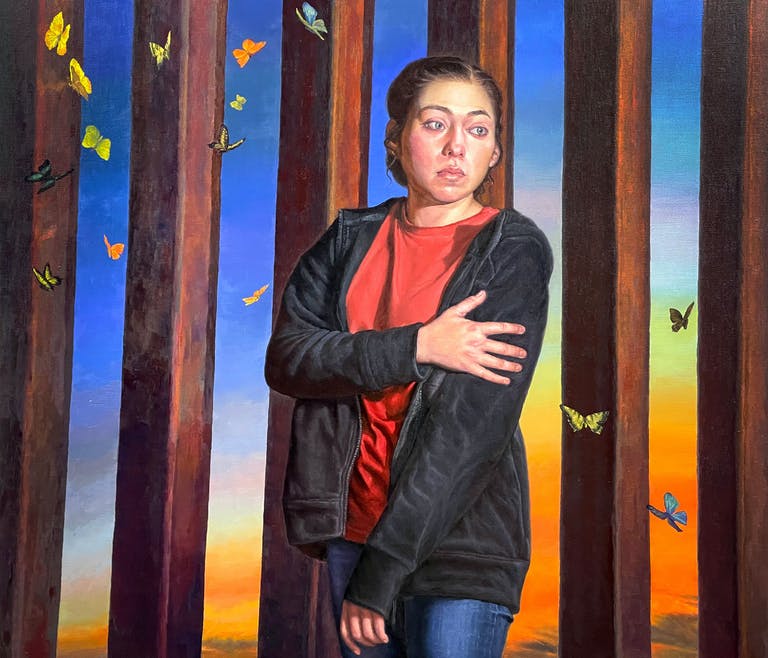
González stands out amid his colleagues as the most technically exacting image-maker. He says he works on paintings and drawings for as long as a year, fine-tuning details, and it shows. He’s the sort of classically oriented painter who invites you to lose yourself in a still life, in the swirling skin of a pomegranate or the shadowed hues of a flower. But his imagination, at least in his work on display here, is more politically inclined. His largest work features a young woman in a bruised protective stance in front of a length of border wall. The wall is solid enough to impede her (or to keep her safe from dangers on the other side), but nearby butterflies effortlessly flit through the space between the slats. González sees the work as a tribute to undocumented migrant women, who are especially vulnerable during their journey north.
The painting serves as a stark reminder of the traumas lurking beneath the surface of immigrant life, hidden histories of suffering that those of us born on the north side of the wall can easily ignore. González was born in Reynosa, on the Mexican side of the Rio Grande, and is interested to tell the stories of border-crossers in rich pictorial contexts that evoke pre-Modernist European and American art. That involves developing mythologies, such as in his series The Creatures of Prometheus, which includes large-scale pencil drawings of a coyote and a hawk. Both animals have double meanings. The hawk, Gonzalez says, represents the bird in Greek myth that pecks out Prometheus’s liver for eternity as punishment for his theft of fire from the gods, but also the aerial drones that patrol the skies above the borderland in pursuit of migrants. Meanwhile, the coyote, he explains, mirrors the role of Greek Prometheus in Indigenous American myths of divine fire theft. And “coyote,” of course, is also the term for those who transport migrants through Mexico and across the border, often treating them viciously along the way.
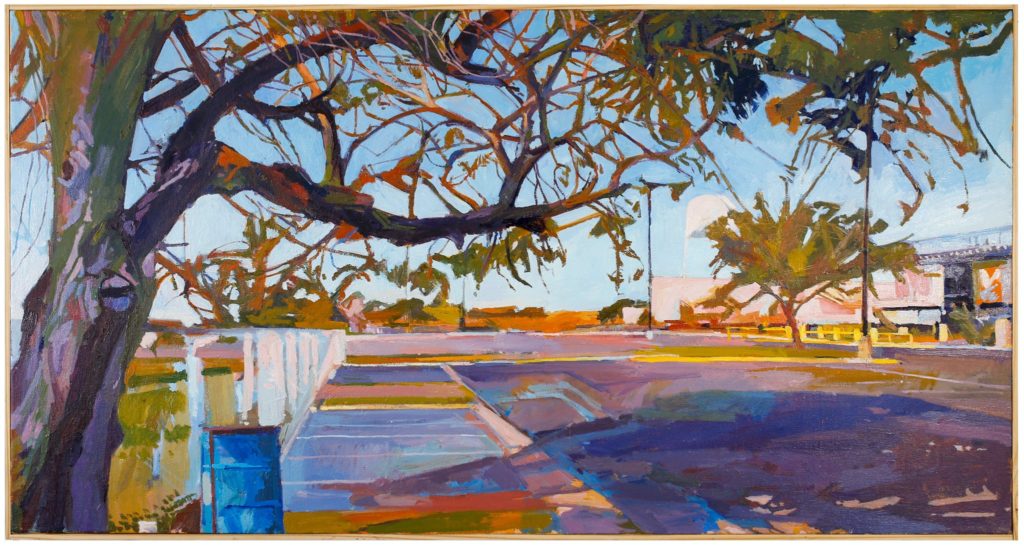
In comparison with the grand-scale, identity-oriented work of his colleagues, Lyles’s neighborhood landscape paintings can come across as humbler and more surface-level, but he’s up to something subtly incisive. His bone to pick, he explains, is with land-use policies and zoning as the RGV has developed in recent decades from an agricultural plain (as seen in Palacios’s work) to more of a homogenized concrete-and-pavement Anytown, USA. Born and raised in Edinburg, Lyles feels a kinship with the native plants and trees of the region, and he tends to paint them where he finds them, these days often encroached upon by aesthetically aggravating new arrivals like cookie-cutter tract homes, chain stores, and parking lots.
This jibes with my personal experience of the landscape of the RGV, which, at least prior to my time with “South of the Checkpoint/North of the Border,” mostly stuck in my mind as a flat monotony of low-density sprawl. It does strike me as odd, in retrospect, that a place like the Valley could be so unique in its isolation between border and checkpoint and yet also so drearily dull in what it is becoming on an aesthetic level. Lyles makes a case for the beauty that local nature has to offer, and he presents it in a palette particular to his eye, rich in purple shadows, light blue skies, and mossy greens.
Perhaps every American city has a few homegrown painting talents who can summon rich art from the familiar landscapes of their hometown. Apart from that, there’s nothing revolutionary to the eye in “South of the Checkpoint/North of the Border.” This exhibition is valuable as a window to a hard-to-pin-down, little-understood place. Here, the Valley
coheres in the imagination into a myth, an enchantment, a song. It’s up to those who know the place well to judge how true it rings and what’s missing, but, as an outsider, I was drawn closer.
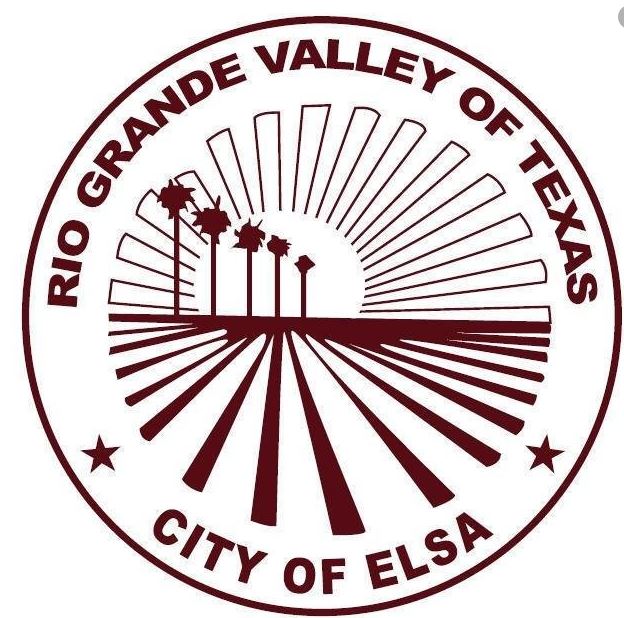
The city of Elsa’s website is becoming more and more informative and interesting to visit. Along
with the standard information on city services, the website also has sections for upcoming
social and entertainment events and has recently added a blog to its service offerings. This new
venue is informative, yet casually entertaining, as it is presented in a first person,
conversational tone that is brief and easy reading. The articles normally address current events
and are accented with corresponding and usually amusing pictorials.
The new blog can be accessed by logging onto the city’s website at www.cityofelsa.net , then
click on “more” and then onto “blogs”. The system allows and encourages for readers to
comment on the blog contents.
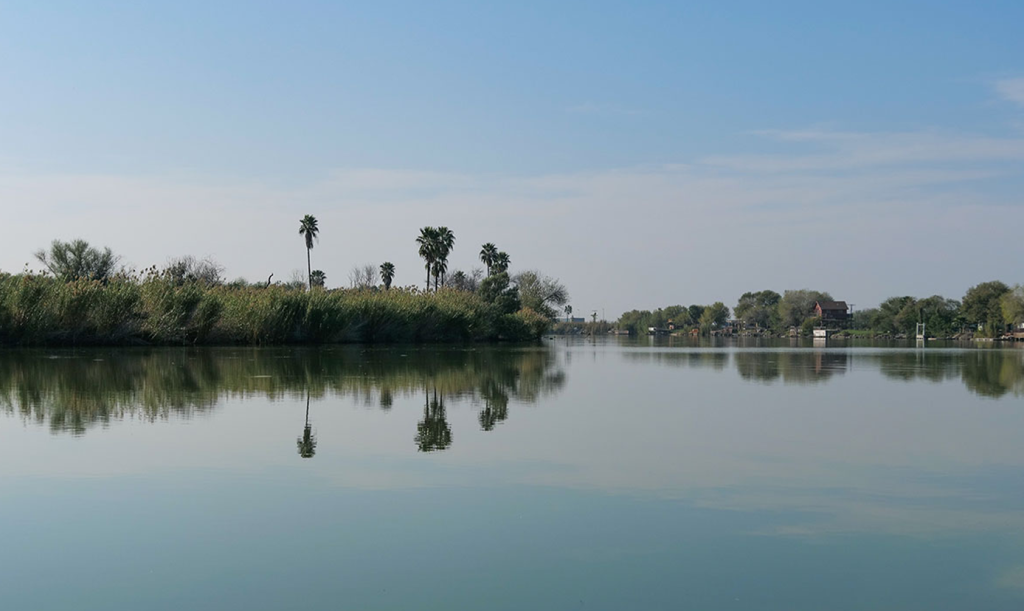
The Rio Grande River has been a nexus of a rich and diverse history of culture, politics, and trade. From its original human uses as a provider of water and fertile land suited for agriculture, its roles have diversified as the communities alongside it developed & evolved. The river, which starts in Colorado and flows all the way down to the Gulf of Mexico in Brownsville, Texas, is nowadays best known as one of the key delineators of the U.S.-Mexico border. Yet, in daily life & commerce, its bridges are what unites North America. To fully appreciate the river’s current role and how it evolved, it pays to take a look at its past, at the origin of the river’s name. While many in the United States & beyond know the river as the Rio Grande River, others call it by its original name: Rio Bravo.
How did these two different names come about? The answer to that question lies a few hundred years ago. Back in 1582, a Spanish explorer, Juan de Oñate, established the first European settlement along the upper Rio Grande in what is now New Mexico. He initially called the river “Rio Bravo del Norte,” or “Brave River of the North” in English. He chose the name Rio Bravo because, at the time, the river was fraught with strong currents and deep waters and flowed rapidly. At another milestone in history, the U.S.-Mexican War (and subsequently the Treaty of Guadalupe-Hidalgo) established a significant portion of the river as the official border between the U.S and Mexico. Many people, especially in Mexico, still refer to the river as Rio Bravo, whereas those on the U.S. side refer to the river as the Rio Grande, which translates to “Big River,” primarily due to the same reasons Juan de Oñate chose the name Rio Bravo.
While over the past century the river’s magnificence has ebbed significantly due to the construction of dams to support the expansion of agriculture as well as flood control, making it a much tamer version of its former self, the river’s significance has grown. The river is so much more than a border, it is the coronary artery of the communities along is bank, and even communities far beyond them. It is the source of water, a recreation destination, the intersection of cultures, and the pathway of trade for tens of millions of people. With a history & significance that runs as long and as deep as the river itself, the Rio Grande River not only impacts its riverbanks but the world at large.
COSTEP is an organization that continually strives to improve how people view the Rio South Texas region and highlight the economic, political, and social significance of the area and its people. You can learn more by visiting www.costep.org or their social media accounts: LinkedIn, Facebook, and Twitter.




